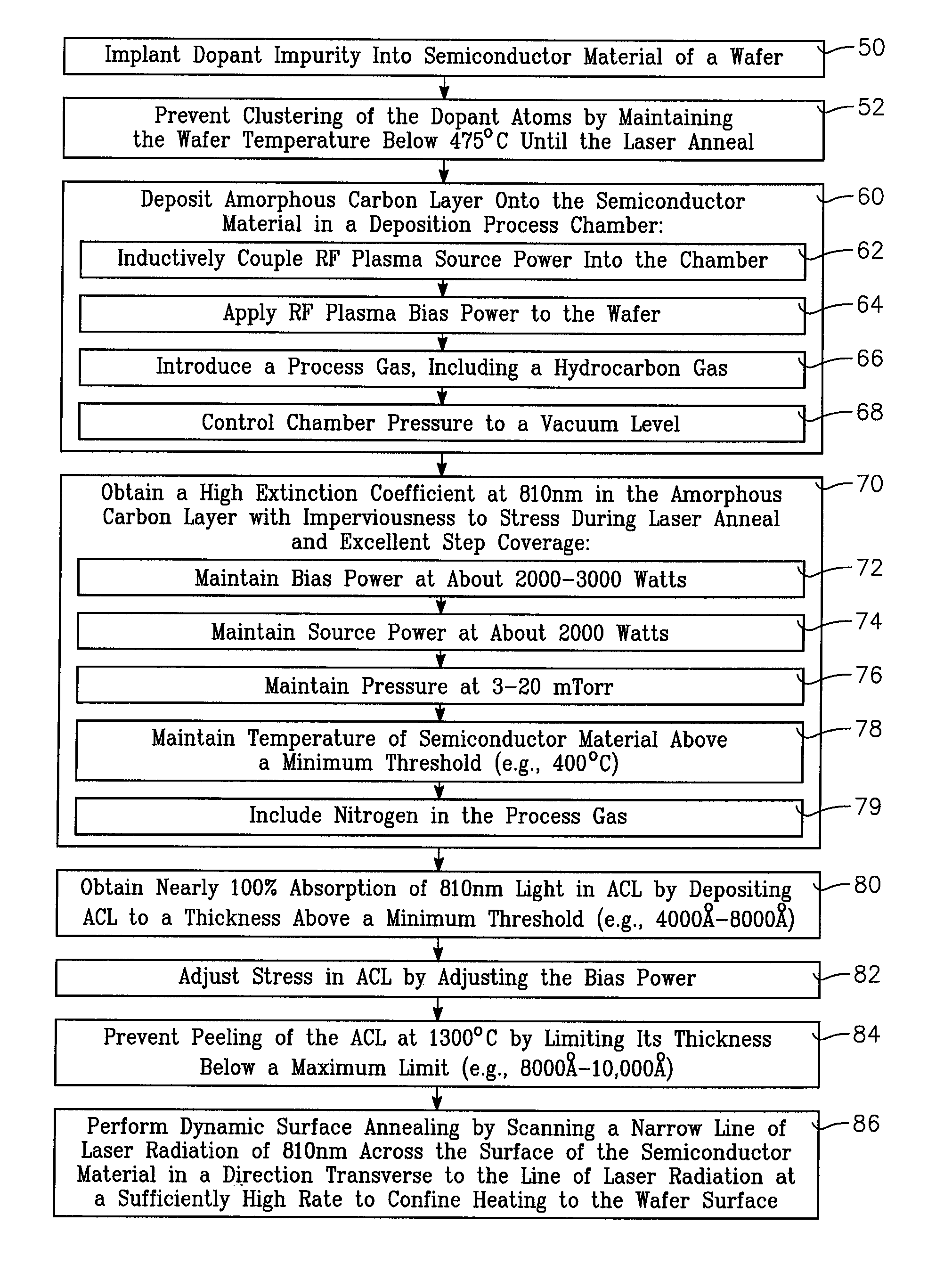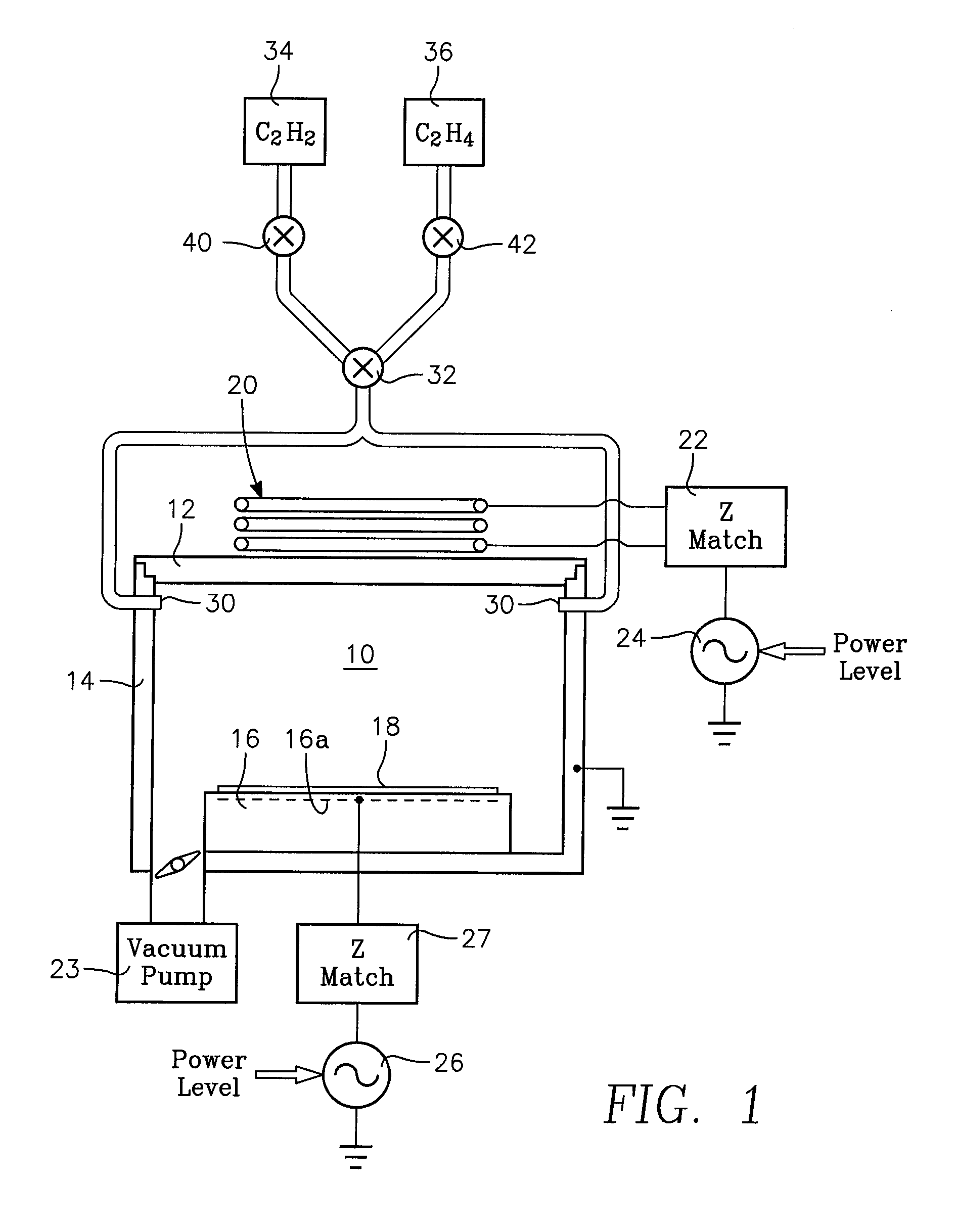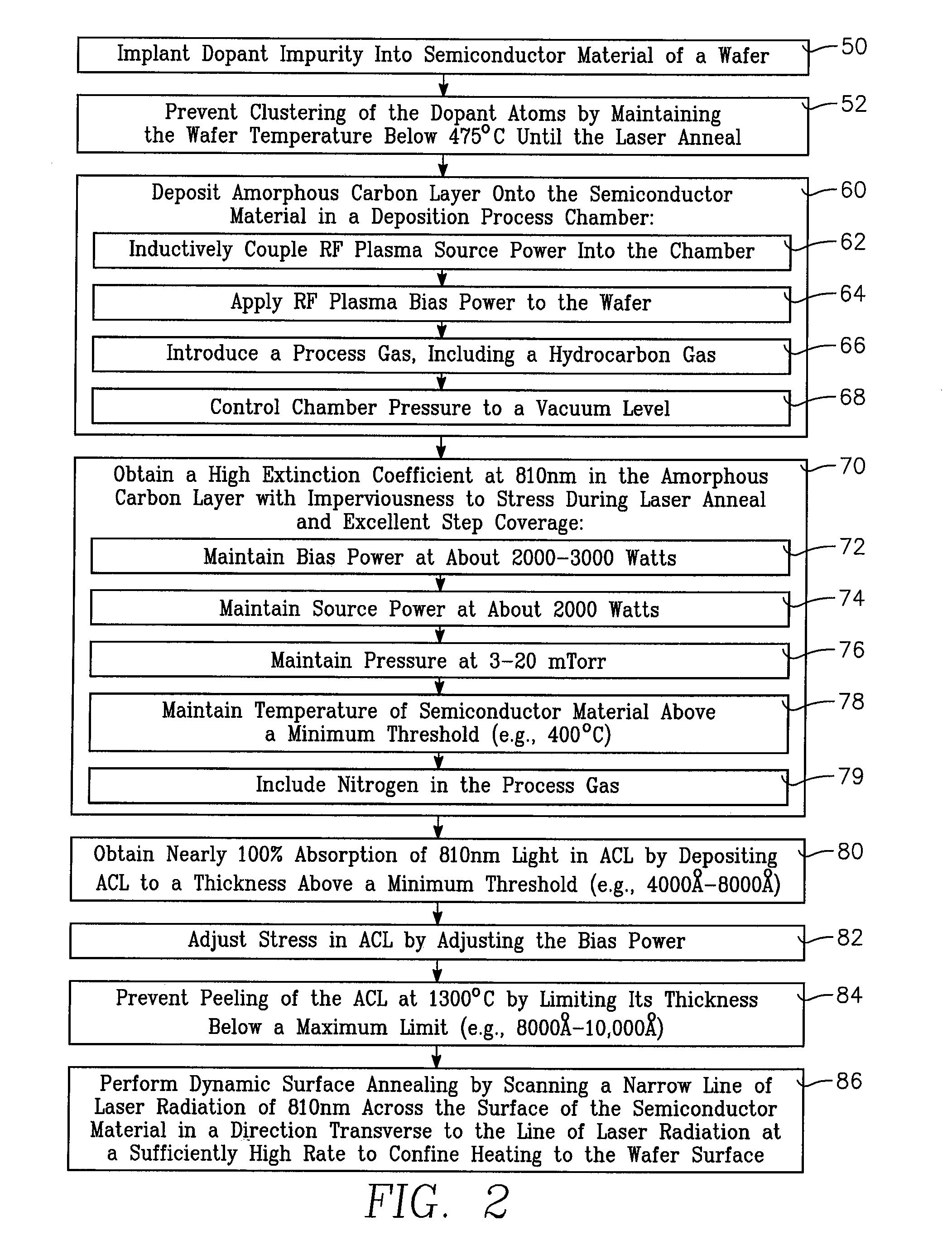Dynamic surface annealing of implanted dopants with low temperature HDPCVD process for depositing a high extinction coefficient optical absorber layer
a technology of optical absorber layer and low temperature hdpcvd, which is applied in the direction of vacuum evaporation coating, chemical vapor deposition coating, coating, etc., can solve the problems of difficult if not impossible to achieve uniform anneal temperature across the wafer surface, deposited layer is vulnerable to cracking or peeling under the high temperature of the laser anneal step, and achieves high optical extinction coefficient (0.5)
- Summary
- Abstract
- Description
- Claims
- Application Information
AI Technical Summary
Benefits of technology
Problems solved by technology
Method used
Image
Examples
working example
[0033]The following is a working example of the high density plasma chemical vapor deposition (HDPCVD) process of block 60 of FIG. 2. In this example, no nitrogen was present in the process gas, the process gas consisting primarily of acetylene. The process parameters were set as follows: RF plasma source power: 2,000 Watts at 2 MHz, chamber pressure: 3 mTorr, RF bias power: 2000 Watts at 13.56 MHz, process gas: Acetylene, wafer temperature: 400 degrees C. The characteristics of the ACL deposited in this example were as follows: extinction coefficient at 810 nm wavelength: 0.55, thickness: 4000 Angstroms, deposition rate: 2550 Angstroms / minute, step coverage: 100%, sidewall thickness to top thickness ratio: 100%, bottom thickness to top thickness ratio: 100%, deviation across wafer: less than 5%, damage at 1300 degrees C. during laser annealing: none.
[0034]The extinction coefficient at 810 nm obtained in the working example is 50% greater than that obtained in the high temperature P...
PUM
| Property | Measurement | Unit |
|---|---|---|
| pressure | aaaaa | aaaaa |
| laser wavelength | aaaaa | aaaaa |
| bias power | aaaaa | aaaaa |
Abstract
Description
Claims
Application Information
 Login to View More
Login to View More - R&D
- Intellectual Property
- Life Sciences
- Materials
- Tech Scout
- Unparalleled Data Quality
- Higher Quality Content
- 60% Fewer Hallucinations
Browse by: Latest US Patents, China's latest patents, Technical Efficacy Thesaurus, Application Domain, Technology Topic, Popular Technical Reports.
© 2025 PatSnap. All rights reserved.Legal|Privacy policy|Modern Slavery Act Transparency Statement|Sitemap|About US| Contact US: help@patsnap.com



